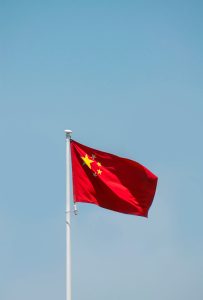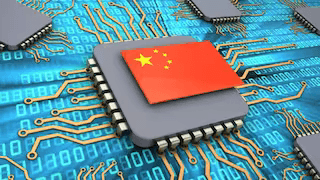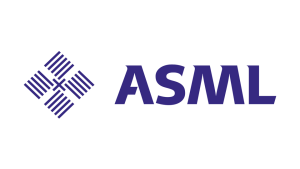ASML Caught in the Crossfire of US-China Rivalry over Semiconductor Technology
By William, a technology journalist and an expert on the semiconductor industry.
The semiconductor industry is one of the most vital and competitive sectors in the global economy, powering everything from smartphones and laptops to cars and satellites. However, it is also one of the most vulnerable to geopolitical tensions, especially between the US and China, the world’s two largest chip markets and producers.
In this article, I will explore how ASML, a Dutch company that is the world’s leading supplier of lithography machines for chip-making, is facing challenges and dilemmas as it gets caught in the crossfire of the US-China rivalry over semiconductor technology. I will also discuss the implications of this situation for the future of the industry and the global innovation landscape.
What is ASML and why is it important?
ASML is a company that specializes in the development and manufacturing of photolithography machines, which are used to produce computer chips. Photolithography is a process that uses light to print tiny patterns on silicon wafers, which are then processed to create the actual electronic circuits on the chips.
ASML is the dominant player in the market, with a market share of over 80% in 2022. It is also the only company in the world that can produce extreme ultraviolet (EUV) lithography machines, which are required to manufacture the most advanced chips with features smaller than 10 nanometers.
ASML’s customers include major chipmakers such as Intel, Samsung, TSMC, and SMIC, who use its machines in their fabrication plants, or fabs, to create chips for various applications and devices. ASML’s machines are highly complex and expensive, costing up to $200 million each.
ASML’s machines are essential for the innovation and competitiveness of the semiconductor industry, as they enable the production of faster, smaller, and more energy-efficient chips that can power the next generation of technologies, such as artificial intelligence, 5G, cloud computing, and the Internet of Things.

How is ASML caught in the US-China rivalry?
The US and China are engaged in a fierce competition over the semiconductor industry, as they both see it as a strategic sector that affects their national security, economic growth, and technological leadership. The US is the global leader in chip design and innovation, while China is the largest consumer and importer of chips, as well as an aspiring producer.
However, the US has been imposing various restrictions and sanctions on China’s semiconductor sector, aiming to limit its access to advanced chip technology and equipment, especially from ASML. The US fears that China could use its chips for military purposes, or gain an edge over the US in emerging technologies. The US also wants to protect its own chip industry from China’s unfair trade practices and intellectual property theft.
Since 2019, the US has been pressuring the Dutch government to stop ASML from selling its EUV machines to China, citing national security and export control concerns The US has also imposed export restrictions on SMIC, China’s largest chipmaker and ASML’s customer, which could prevent it from buying ASML’s machines and other US-origin equipment and software.
These moves have put ASML in a difficult position, as it has to balance its business interests and customer relationships with its compliance with the US and Dutch regulations and its alliance with the US and Europe. ASML has stated that it respects the rule of law and follows the export control regimes of the countries where it operates. However, it has also expressed its frustration and disappointment with the political interference and uncertainty that affect its business

What are the implications of this situation?
The situation that ASML faces has significant implications for the semiconductor industry and the global innovation landscape, as it reflects the growing tensions and fragmentation in the technology domain.
On one hand, the US-China rivalry could spur more investment and innovation in the semiconductor industry, as both sides seek to reduce their dependence on each other and enhance their self-reliance and resilience. For example, the US has passed a bill to provide $52 billion in funding and incentives for its domestic chip industry, while China has allocated $1.4 trillion for its technology development plan, which includes semiconductors
On the other hand, the US-China rivalry could also hamper the collaboration and cooperation that have been the hallmarks of the semiconductor industry, as it creates barriers and uncertainties for the global supply chain and the market. For example, ASML’s inability to sell its EUV machines to China could limit China’s progress in chip production, but also affect ASML’s revenue and growth potential, as well as the innovation ecosystem that it supports.
Moreover, the US-China rivalry could also lead to a bifurcation of the technology standards and norms, as both sides pursue their own agendas and interests. This could result in a loss of interoperability and compatibility, as well as a divergence of values and principles, among the different technology systems and platforms.
Conclusion
ASML is a company that plays a crucial role in the semiconductor industry, as it provides the key equipment and technology for chip-making. However, it is also a company that faces challenges and dilemmas, as it gets caught in the crossfire of the US-China rivalry over semiconductor technology. This situation has implications for the future of the industry and the global innovation landscape, as it reflects the dynamics and complexities of the technology domain in the 21st century.











